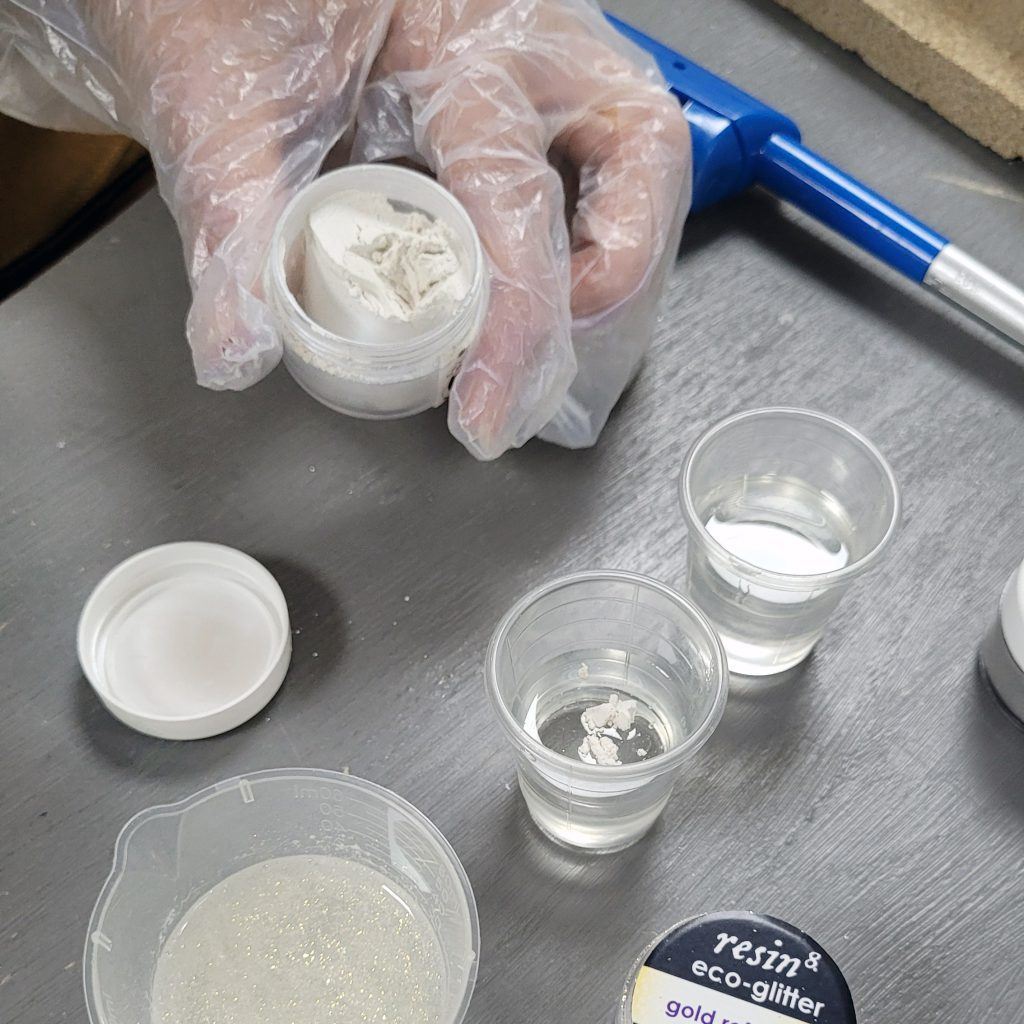
Resin is an extremely versatile and exciting material which can be used without the need for expensive tools and equipment.
In this first part of our guide to resin, we allow you to discover exactly what is resin, as well as the different types available.
What is Resin?
In its basic form, resin is a clear and viscous substance, which can be cured using a hardener to form a solid object or surface. It can be used for decoration (coating and layering) but also to cast complete pieces using a mould. Most resins consist of a base material and a catalyst (hardener), which must be added using a specific ratio, for example 2:1 or 1:1, to allow the hardening process to work successfully.

(N.B. There is no one answer on how to use resin. Instructions vary across different products and manufacturers so instructions must be followed to the letter – never guess!)
Resin is usually fully cured after 24 hours (although this varies from product to product) and sets to a lovely, clear and glossy finish, which requires little or no polishing thanks to the development of modern, more user-friendly products.
As a clear medium, resin is a fantastic vehicle for colour and this is achieved using coloured pigments which come in either powder (mica powder) or liquid form. Finishes can be transparent, opaque, metallic, glitter and neon and in just about every colour imaginable offering huge scope for imagination.
If you’re wondering how to make resin flower jewellery or other found/everyday objects such as shells, slowly add resin by carefully pouring it over after mixing. This is often done gradually in layers, particularly when making larger pieces. Once solidified it gives the illusion of an object floating in space and offers a way to perfectly preserve natural forms which is extremely effective. It is ideal for mixed media pieces as it adheres to wood, metal and stone.
Different types of Resin:
There are numerous different types of resins available (e.g., UV Resin, Polyester Resin, Polyurethane Resin, Crystal Resin and Bio Resin) some naturally derived whilst others are synthetic. They all have slightly different properties and are used in a wide variety of commercial and industrial applications, but for the purposes of jewellery making, Epoxy Resin is the most commonly used and freely available. It can either be purchased clear, or pre-coloured but both versions work in the same way.
Within the epoxy resin category there are even more choices to make, so it’s important to ask yourself;
What do I want this resin to do?
If you want to pour liquid resin into a mould (casting), you will need a low viscosity product which basically means it is very runny. These types of resins self-level very quickly, pour well and tend to cure slowly meaning you have a longer working time before the product starts to set. They are ideal for general purpose projects and many come pre-coloured making them perfect for beginners.

Standard/Doming resin is slightly more viscous, meaning it is a little thicker and will set with a slight dome so is perfect for cabochon style settings and for providing a final coating to a piece. Working times will be slightly less than a low viscosity resin. These resins are generally clear.
Gel/Thixotropic resin contains a thickening agent, so won’t drip which makes it ideal for curved surfaces, e.g., rings and bangles. It has a short working time as it hardens quickly, so planning is essential when using this product.
Want to learn how to make jewellery from resin? or how to use resin for other decorative projects? Finding the right product is the first step to a successful outcome! Look out for part 2, where we will look at essential tools and explain exactly how to get started.







